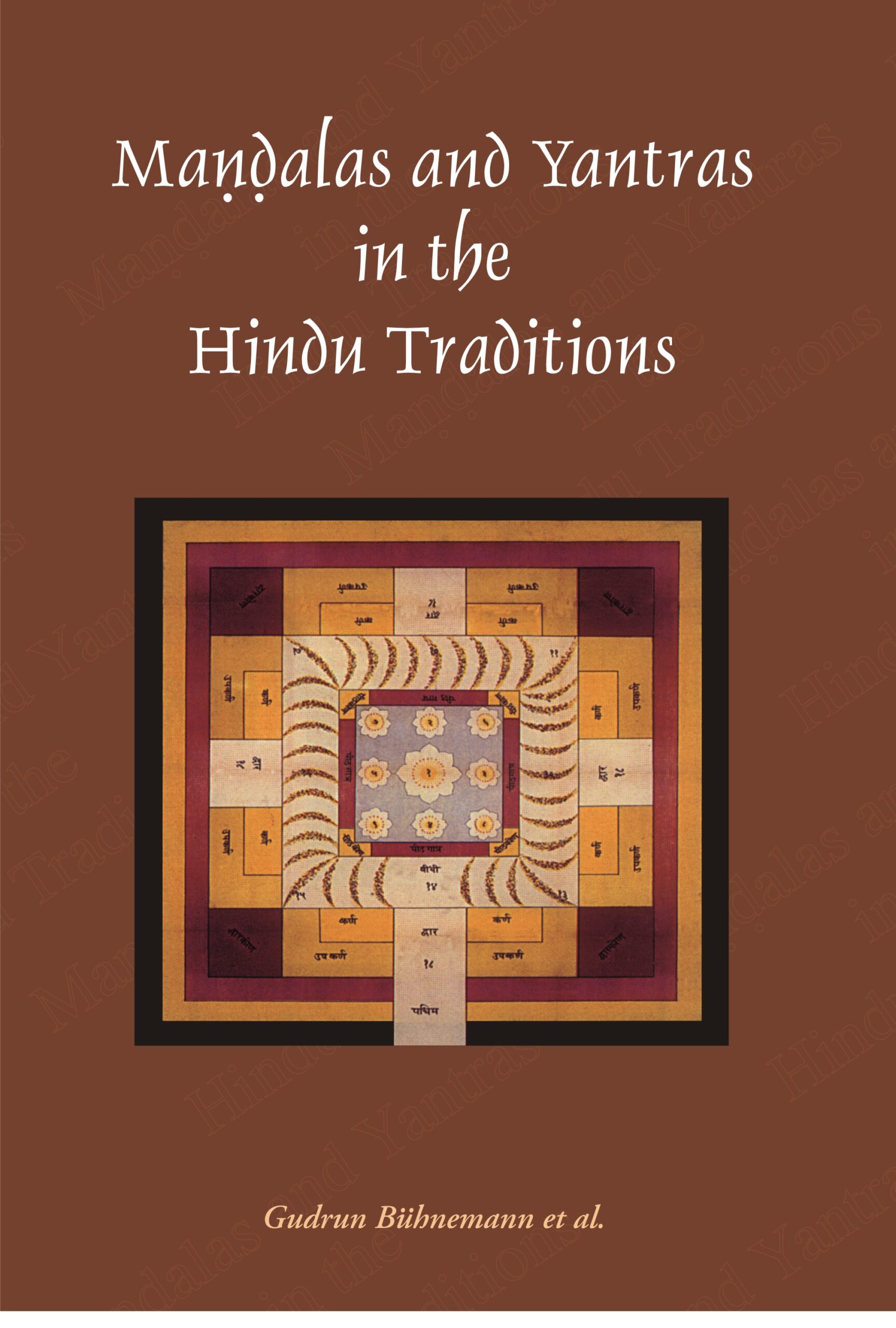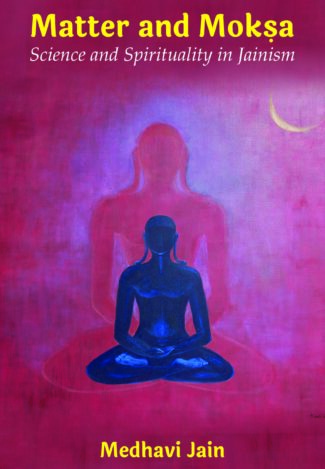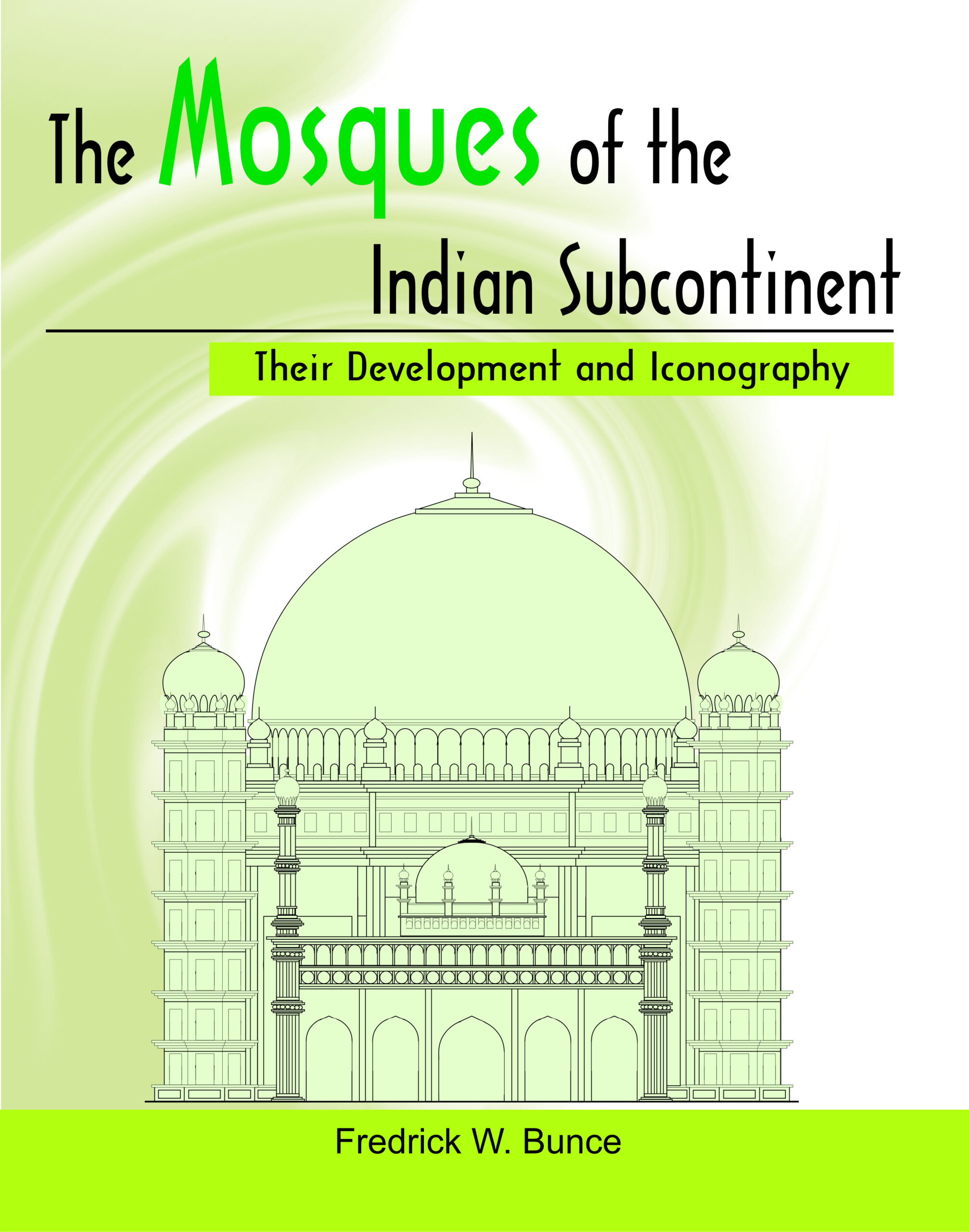Showing 133–144 of 250 results

In recent years mandalas have attracted much interest and the main focus of such interest has been directed towards Tibetan mandalas. But mandalas are found across a wide spectrum of South Asian religious traditions as well including those of the Hindus and Jains. Hindu mandalas and yantras have hardly been researched. This book attempts to fill this gap.
Mandalas and Yantras are used in rites of worship in a wide range of Hindu, Buddhist and Jaina religious traditions. This volume has scholarly articles that deal with the little-researched subject of mandalas and yantras in specific Hindu traditions-Smarta, Pancaratra, Shaiva and Shakta traditions. The articles discuss mandala-like arrangements and the navagrahamandala in the ritual practices of Smarta Brahmins in Maharashtra. Use of mantras and yantras in the Vaishnava Pancaratra tradition is studied on the basis of passages from the Samhitas. They concentrate on the Siddhanta school, pre-11th century Shaiva Mandalas expressing the link between branches of Shaivism and between Shaiva and non-Shaiva groups, and description of use of mandalas in Abhinavaguptas Tantraloka. The shricakra is explored as a cosmic than a ritual diagram which has immense religious/spiritual significance. A slightly different attempt examines application of vastumandala, as described in Varahamihiras Brihatsamhita, in temple architecture. Parallels are drawn between the rituals taken up here and others like Buddhist tantric initiation rites. The writings consult many religious texts including the Sharadatilaka, the 11th-century Yoginihridaya and the Svacchandatantra to understand mandala structure and rituals. A highlight of the volume is the inclusion of numerous reproductions of mandala designs and other drawings and extensive notes. The volume will be useful for Indologists studying Hindu religious traditions, particularly mystical rituals and rites of Vaishnava, Shaiva and Shakta traditions.

The 24,000 verses long Manthanabhairavatantra is the most important and extensive Tantra dedicated to the goddess Kubjika who is exclusively worshipped in the Kathmandu Valley. The section, Kumarikakhanda, offered here in 14 volumes, presents Kubjikas unique historical importance in the extraordinary richness of the inner, spiritual dimensions of her cult.
The Manthanabhairavatantra is about 24,000 verses long and is divided into three sections (khanda). The one edited and translated here is the Kumarikakhanda. Along with the Kubjikamata, the Manthanabhairavatantra is the most important and extensive Tantra dedicated to the worship of the goddess Kubjika. Although originally an Indian goddess, Kubjika is almost exclusively worshipped in the Kathmandu Valley, where her cult has been kept scrupulously secret by Newar initiates for centuries. Almost all the manuscripts of her Tantras and related literature have been found there.
Kubjika is a powerful development of Malini, the principal goddess of the Trika Tantras and Kali of the Kashmiri Krama tradition. Her cult belongs to a chain of early Kaula systems that culminate with that of the goddess Tripura and so sheds considerable light on them. Kubjikas unique historical importance is mirrored in the extraordinary richness of the inner, spiritual dimensions of her cult. These are explored in detail in the introduction to the edition and translation of the text with extensive references from mostly unpublished Kubjika Tantras and those of related schools.
The work took close to two decades to produce. In this time numerous working editions of unpublished Tantras and related texts were prepared by the author with the help of a team of five trained assistants.

The book deals with the leading theory and practices of Jainism, putting much focus on ethics, thereby to the theory of karma, it also delves upon with the theory of yoga philosophy of non-absolutism, and the concept of time, space, metaphysics, etc.
“In Matter and Mokṣa, matter indicates the subject of science, whereas mokṣa refers to the peak of spirituality, as described by the Indian thinkers of Jaina philosophy. Interestingly, science and spirituality have always been intertwined subjects for Indian scholars. Where one is incomplete without the other, as the spiritual self is the only one who embarks on the journey to be a scientist. The book starts with the leading theory and practices in Jainism by throwing light upon the importance of ethics in one’s life. In Indian culture, ethics are directly linked with the actions one performs; hence covers the theory of karma. Then comes the importance of knowledge in improvising one’s reactions to lead a peaceful and non-violent life. Moving ahead comes yoga, which holds a very high significance in all Indian traditions and according to Jaina philosophy, it is an inseparable part of a being’s life. It further talks about the basics of the theory of non-absolutism as described by the 24th and the last Ford maker Mahāvīra.
The book throws light upon the concept of space, time, cosmography and metaphysics. It also covers the spiritual aspect by explaining the concepts of soul, mind and body, the importance of meditation, nine categories of truth, the concept of God and then the final destination, the ultimate purpose of existence mokṣa as explained in Jainism.”

The book endeavours in recounting the mode in which Mohammed accomplished a tedious task of constructing a state and an empire out of the Arab tribes. It attempts to do justice to his intellectual ability and to observe towards him the respectful attitude which his greatness deserves. The volume is neither an apology nor an indictment.
The standpoint from which this book is written suggests and regards Mohammed as a great man, who solved a political problem of appalling difficulty – the construction of a state and an empire out of the Arab tribes. The book endeavours in recounting the mode in which Mohammed accomplished this, to do justice to his intellectual ability and to observe towards him the respectful attitude which his greatness deserves. The volume is neither an apology nor an indictment.
As far as the fecundity of the content is concerned, the book has taken a cue from different Arab sources and many scholarly works of earlier historians, efforts of many European scholars on Mohammedan antiquities and Islamic traditions. In condemning traditions unhistorical, the book has ordinarily considered the obelus of scholars like Ignaz Goldziher, Thodor Noldeke and Julius Wellhausen sufficient.

The Indian subcontinent is home to some spectacular mosques which are architectural marvels produced by the spread of Islam in India. 54 important mosques including their locations, history, structure and plan patterns, are covered in this volume which will be indispensable for scholars and students of Indo-Islamic architecture.
The spread of Islam in India produced some of the most spectacular monuments, the mosques stand as testimony to the great architectural skill and expertise of the Indian subcontinent through centuries and constitute one of the most important aspects of the rich architectural culture of the region. This volume showcases some 54 important mosques spread across the Indian subcontinent from Lahore in modern Pakistan to Gaur in modern West Bengal and from Delhi in the north to Kayalpatnam and Bijapur in South India. It mentions the location of the mosques, their history, structure and plan patterns and discusses various elements of the structures in detail: their entrances, pillars, porticoes, type of mihrab and other aspects. It emphasises the importance of a particular masjid such as its typifying the mosques of a certain period or dynasty and setting the standard for later masjids in some manner. It presents some other plans and proportional elevations in the appendices for a comparative study. An extremely useful list of Muslim rulers of the Indian subcontinent is provided. With maps and drawings of plans of mosques, the book is a painstaking effort to examine the evolution and iconography of the mosque architecture in the region. The volume will be indispensable for scholars and students of Indo-Islamic architecture.

This book is a dictionary of mudras in Hindu and Buddhist religious practices that lists various mudras and contains detailed and revealing notes about them. It scrutinizes the work done by a number of scholars to throw further light on the subject.
Mudras occupy an important place in Buddhist and Hindu religious practices as these signify special meanings, associated with specific divinities and rites, which cannot be represented any other way. This book is a dictionary of mudras in Hindu and Buddhist religious practices that lists the various mudras deity-centred, rite-centred, yogic-centred, and so on illustrating each with a simple drawing drawn generally from the perspective of one holding the mudra. It contains detailed notes that give numerous references to literary and other sources that reveal a lot about the mudras their descriptions in the texts, rites associated with the mudras in the texts as well as the varied interpretations of a number of mudras in the different texts. The book also has an introduction on Hindu and Buddhist mudras that goes into iconographic features associated with deities along with the technical descriptions and the subcategories and further divisions into which mudras are arranged. It scrutinises the work done by a number of scholars on the subject to throw further light on the subject. The volume will prove indispensable to all students and scholars who are engaged in study of Hindu and Buddhist religious traditions and practices.

The book studies INLAY art that developed in Mughal Architecture indigenously, from Humayun to Shah Jehan (c. 1535 to 1658 ad). Mughal inlay is architectural and to brand it pietra-dura, which was a florentine picture-art used on wooden furniture, is a misnomer. This book also reveals that Orpheus Plaques which led the colonial historians to Florence to trace the origin of Mughal inlay were imported ready-made and there is no other example of Florentine pietra-dura.
The book studies INLAY art as it developed in Mughal Architecture indigenously, from Humayun to Shah Jehan (c. 1535 to 1658 ad), landmark examples of which have been illustrated. Mughal inlay is architectural, and it is a misnomer to brand it: pietra-dura which was a florentine picture-art used on wooden furniture. Orpheus Plaques which led the colonial historians to trace origin of Mughal inlay to Florence, were imported ready-made and there is no other example of Florentine pietra-dura. Inlay is the most distinctive characteristic of Mughal Architecture and study of its growth and development, to the elegance of the Taj dados, the chef doeu-vre of Indian art, is historically as enlightening, as interesting it is artistically.

This book explores the rich history, architecture, and spiritual significance of Chidambaram, the sacred birthplace of Nataraja. With 150+ images, it delves into its artistic, philosophical, and mystical essence.
“Chidambaram is a place of great antiquity which has been revered as one of the holiest sites in India for millennia. It is widely recognised as the birth place of Nataraja – King of Dancers an iconic and highly recognisable form of divinity in the Indian culture and tradition. Beyond being a mere religious symbol the imagery of Nataraja contains many layers of deep and subtle meaning.
This book is an exploration of these concepts and offers a glimpse of the many facets of the Chidambaram temple. This publication has been carefully curated with passion and devotion and offers a visual and stimulating journey of Chidambaram through a selection of over 150 high quality pictures and art work. It also contains literary snippets, short narratives of its exotic history and architecture, along with intriguing scientific, philosophical and mystical interpretations of this legendary temple.
Whether you are an art aficionado or someone interested in history, mythology, or science and spirituality, there is something in this book for you.”

Setting out a spiritual dialogue between Saiva and Christian mysticism, the book articulates world-views of the mystical traditions of Saiva-Siddhanta, Kashmir Saivism, Meister Eckhart, Hadewijch, Julian of Norwich, St. Ignatius Loyola and of the Eastern Christianity.
If mysticism is hard to define, what is it then? Or, why have mystics often spoken about what they have realized notwithstanding the unspeakability of a spiritual experience? And, yet more significantly, how can a meeting point of different religious traditions be discovered at the mystical level? Focussing on these and other related questions, eminent scholars from varying religious traditions here explore the nature of mystical experience in two of the worlds major traditions: Hinduism and Christianity. Neither a comparative study of religious traditions, nor an attempt to develop an overall mystical theology, the book sets out a spiritual dialogue between Shaiva and Christian mysticism: a dialogue wherein the participants articulate worldviews of the mystical traditions of Shaiva Siddhanta, Kashmir Shaivism, Meister Eckhart, Hadewijch, Julian of Norwich, St. Ignatius Loyola, and of the Eastern Christianity. And, without taking any a priori intellectual position, each author here evolves his/her own tradition-specific perspective on mysticism letting the comparisons, if any, to surface in the dialogue itself. A spiritual dialogue, like the one this multi-author work embodies, holds a key to an insightful understanding between different people, cultures and faiths more specially in todays world riven, as it is, by fundamentalist forces and endless religious conflicts. The book will be a valuable acquisition for the scholars and spiritually interested readers alike.

The volume presents a critical study with English translations of the renowned Buddhist scholar Nagarjunas works, Mahayanavimsika, Pratiya-samutpadahrdayakarika and Pratiasamutpada-hrdayavyakhyana a prose work. While the translations are easy to understand, the comment-aries incorporate study of rare manuscripts like the Dunhuang manu-scripts (eighth-ninth centuries) to thoroughly examine the significance of Nagarjunas contributions to Buddhist religious philosophy.
No one can, perhaps, question the philosophical genius of Nagarjuna. In the dialectic of this AD second century Buddhist scholar also acknowledged as the founder of Madhyamika school, is seen the clearest expression of Shkyamuni Buddha’s profound, even the subtlest teachings. Here is, in three parts, a brilliant critical study, with readable English translations, of this time-honoured philosopher’s Mahayanavimshika (Verses on the Great Vehicle), Pratiyasamutpadahridayakarika (Verses on the Heart of Dependent Origination) and, these besides, of his prose commentary, Pratiasamutpadahridayavyakhyana (An Interpretation of the Heart of Dependent Origination). Part 1, comprising translation, is intended to present these Buddhist texts, is an accessible form, unencumbered by any critical apparatus. Part 2 provides text critical material as well as other comments for readers interested in something more than just the translation in isolation. In part 3 are incorporated, for specialists/scholars/academics, further critical comments in the light of the Dunhuang manuscripts (c. eighth-ninth centuries ad), relating to the Pratiyasamutpadahridaya. A remarkable combination of Jamiesons Sanskrit and Tibetan scholarship, this study is invaluable to anyone seeking a better understanding of Nagarjuna: the Buddhist philosopher and patriarch.

This bilingual volume talks about the varied problems of philosophy in terms of definition, philosophical thinking, and the relation between thought and language. Problems that confront to a reflective mind need to be analysed, clarified and resolved. The book fulfils that task.
“Nature of Philosophy is a bilingual volume in English and Hindi. It talks about the varied problems of philosophy in terms of definition, philosophical thinking, and the relation between philosophy and language. Akin to any other discipline, in philosophy too, problems concerning it need to be analysed, clarified and resolved for a proper understanding and, it is the ultimate goal of this book. Herein, problems are made clear by analysis, questioning and critical method. The clarity thus achieved prompts us for philosophical reflection to the extent of removal of the problem and a discriminate understanding of the concept. It emphatically states that since philosophical problems are the objects of reflection, philosophical reflections aim at conceptual clarity by analysis, interpretation and wisdom. The question of any sort of risk against philosophy does not hold any merit. It is because philosophy fulfils human aspirations and truth of reasoning to confront with and reflect on problems to remove them. This book offers a thumbnail sketch of the varied problems of philosophy and proffers solutions to them in an efficacious manner.”

This work surveys the state of Hindu studies over the ages by studying the history of Hinduism. Critically analyzing the literature that emerged during various periods it focuses especially on the Hindu-Muslim encounter at political, religious and mythic levels. It also analyses the concept of conversion and secularism in India and deals with the origin of Hindu fundamentalism in Hindu society.
This work surveys the state of Hindu studies over the ages by studying the history of Hinduism in four periods: Vedic Hinduism, Classical Hinduism, Medieval Hinduism and Modern Hinduism. Commencing the study with some general observations on the study of Hinduism such as confinement of the study by and large to India and lack of a political history of Hinduism, it examines features of Hinduism that established themselves during the different periods. Critically analyzing the literature that emerged during various periods and the light they shed on Hindu thought, it focuses especially on the Hindu-Muslim encounter at various levels especially political, religious and mythic in the medieval period with particular bearing on the mystical encounter between them as available through royal records and literature. Considering the views of religious thinkers and scholars like Raja Rammohan Roy, S. Radhakrishnan and Mahatma Gandhi, it examines the source material especially in English and authored by Hindus themselves for study of history of Hinduism in the modern period. Delving into the ideological forces modern Hinduism has had to contend with to wit Islam, Christianity and science; it analyses the concept of conversion and secularism in India and deals with the origin of Hindu fundamentalism in Hindu society. The book will be useful for students and scholars of Hindu political thought, philosophy and religion and especially those concerned with Hindu studies as a discipline, as it throws up new areas for research in Hindu studies which have so far been neglected.
| There are no products |